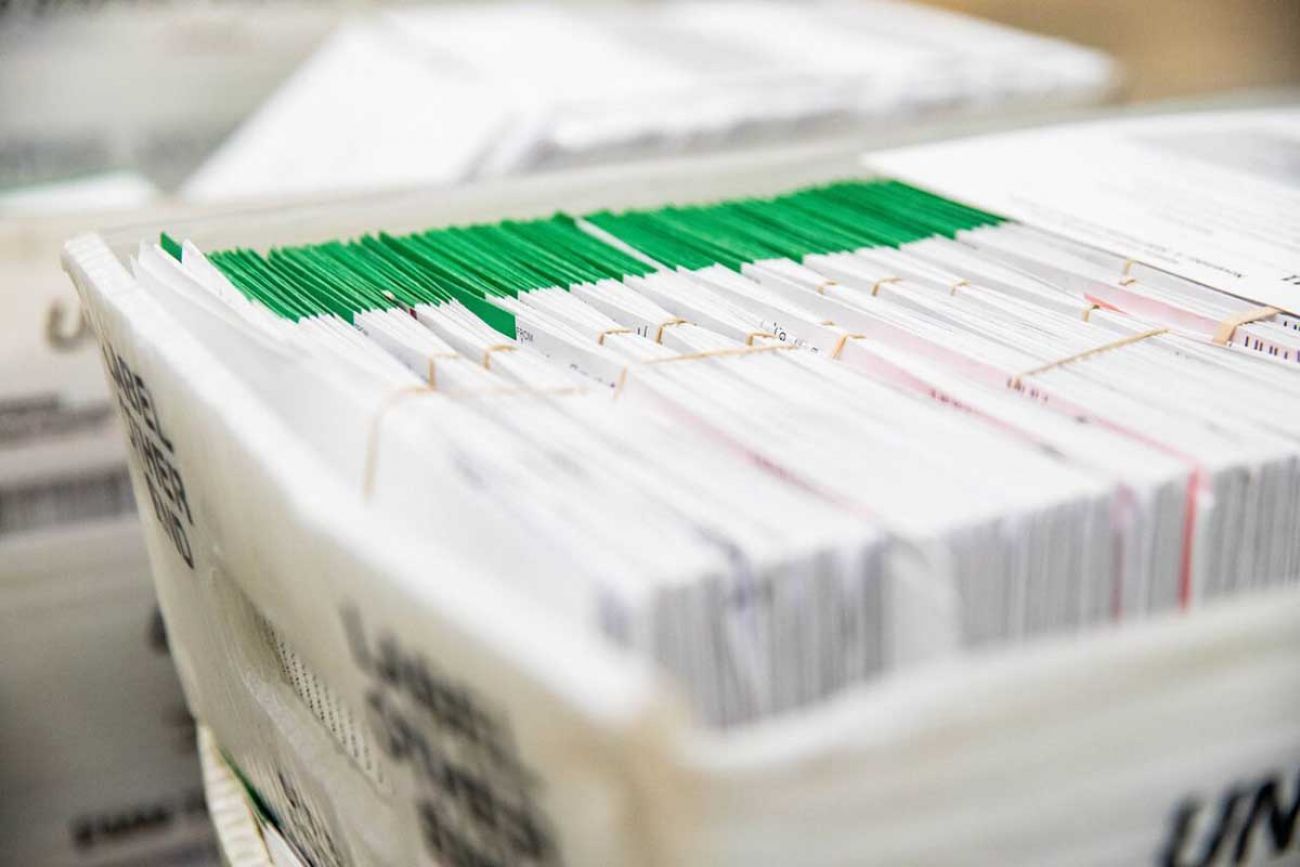You voted, now what? What happens to ballots in Michigan

- When you mail or turn in a Michigan ballot, election officials’ work begins
- In-person and absentee ballots are processed differently, but results cannot be reported until polls close on Election Day
- Ballots are kept after Michigan elections for recounts, audits
So, you’ve cast your ballot. Now what?
Whether a Michigan voter drops an absentee ballot in their mailbox or picks up an “I Voted” sticker in person, casting a paper ballot kick-starts a lengthy behind-the-scenes journey.
A ballot’s life cycle extends well beyond Election Day — local and state election officials must process, tabulate, report out and certify results, as well as store the ballots safely in the event of post-election audits or recounts.
Here’s a look at what happens.
Absentee ballot intake
Once voters return their absentee ballots by mail, drop them off at a designated ballot drop box or deliver them to their local clerk in person, election officials scan the ballot envelope into the computer system and verify that the signature on the ballot envelope correlates with the signature on file.
If a voter forgets to sign the envelope or the signature is significantly different than the one on file — or if someone else signed the envelope — the clerk’s office is supposed to notify the voter of the discrepancy and ask them to correct it.
Related:
- Michigan elections 2024: How to get an absentee ballot
- Michigan elections 2024: What to know about voting, registration and more
- Michigan elections 2024: What’s new in state voting process?
- Michigan elections 2024: Polls for president, Senate, Biden, Trump
- Michigan elections 2024: Key dates, last day to register to vote
- Michigan elections 2024: Issues and policies, Biden, Trump, Democrats, GOP
Ballots are then sorted by voters’ ward and precinct and cross checked to ensure the number of ballots matches what’s recorded on the computer. The ballots are then stored in bins by ward and precinct and remain in storage until they can be processed or counted, unless there’s a change in a voter’s status or a voter asks to spoil their ballot ahead of Election Day.
Cities and townships of any size are now allowed to process and tabulate absentee ballots between 7 a.m. and 8 p.m. on the Monday before Election Day, or on any of the eight days prior to Election Day if the municipality has over 5,000 residents. However, they cannot report any results until polls close at 8 p.m. on Election Day.
In-person voting
Voters can come in person to cast their ballots on Election Day, but they also have the option to do so in advance under the state’s new early voting law.
Procedurally, early voting and Election Day voting are treated the same: a voter fills out a ballot and feeds it directly into their polling place’s tabulator. With the press of a button, the voter casts their ballot for counting, though they have the option before that to scrap it and request a new one if the tabulator identifies a mistake, like voting for multiple candidates for one office.
Tabulators keep a running total of ballots cast, and the ballots themselves drop down into a bag inside the machine. Ballots with votes for write-in candidates are checked manually by election workers.
The votes are stored on two memory cards in the machine, which are sealed with a tamper-evident lock that can be broken only once the polls close on Election Day. Once the polls close, the chair and co-chair of the precinct (two election workers of different political parties), enter a code into the machine given to them by the city clerk that prints off three paper reports with the results.
At that point, election officials are tasked with securely transporting the memory cards, the election reports and sealed bags of ballots to their local clerk’s office. The results on the memory cards are then uploaded into the clerk’s computer system and sent to the county clerk’s office.
One of the paper copies of the results stays with the city clerk, one is sent to the Board of County Canvassers, and one is sent to the county’s chief probate judge.
After Election Day
Both absentee and in-person ballots are sealed into official ballot bags and stored in clerks’ offices, where they must remain until the Board of State Canvassers certifies the election results.
Unofficial results are first reviewed by county canvassing boards — four-person panels made up of two Democrats and two Republicans nominated by their respective parties — to ensure the number of voters matches the number of ballots cast. If there are discrepancies, canvassers can require the ballots to be brought before the board in a public meeting to address any issues.
Once county canvassers sign off, the Board of State Canvassers reviews results from all 83 counties and votes to officially certify the results statewide. For the general election, canvassers are required to meet no later than Nov. 25.
If a statewide political race is decided by 2,000 votes or less, an automatic recount is triggered. A candidate can also request a recount within 48 hours after results are certified, though the process is expensive and rarely reverse the original result.
If a recount is triggered, canvassers in contested jurisdictions have 20 days for primary elections or 30 days for general elections to finish the job.
After election results are certified and any recounts are complete, local clerks move the ballots into storage, where they must be kept for 22 months.
The elections process is also audited at state and local levels following a major election cycle to determine whether procedures were properly followed, with the Bureau of Elections randomly selecting precincts in specific contests for post-election review.
See what new members are saying about why they donated to Bridge Michigan:
- “In order for this information to be accurate and unbiased it must be underwritten by its readers, not by special interests.” - Larry S.
- “Not many other media sources report on the topics Bridge does.” - Susan B.
- “Your journalism is outstanding and rare these days.” - Mark S.
If you want to ensure the future of nonpartisan, nonprofit Michigan journalism, please become a member today. You, too, will be asked why you donated and maybe we'll feature your quote next time!




